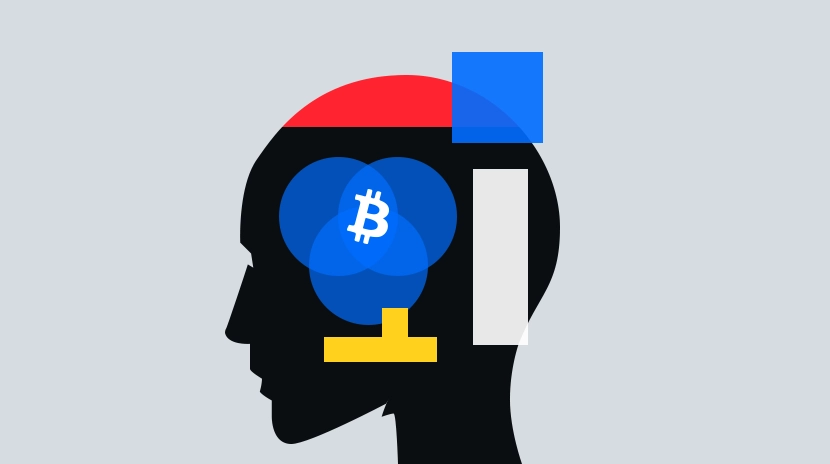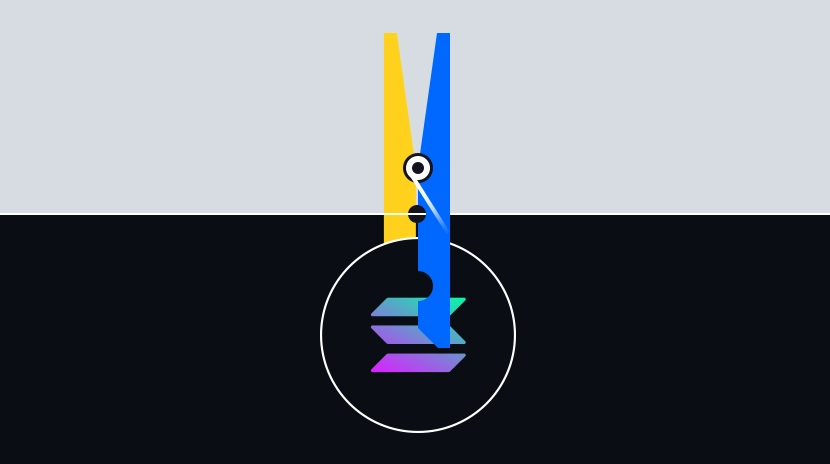Comparison of MEME Growth Paths on Solana and BNB Chain: Community-Driven vs. Traffic-Driven Competition
This article will analyze the differentiated competition between the Solana and BNB Chain ecosystems from four dimensions: MEME cultural core, construction logic, infrastructure development, and market timing.Recently, the growth of MEME on Solana has been accelerating, while BNB Chain has experienced a strong surge. However, the two ecosystems have taken distinctly different paths in the development of MEME culture. In this article, PANews will analyze their differentiated competition from four dimensions: MEME cultural core, construction logic, infrastructure development, and market timing.
MEME Cultural Core: Wild vs. Official
To some extent, Solana’s MEME ecosystem leans towards a community-driven “wild” cultural melting pot. MEME coins on Solana are characterized by strong grassroots momentum, driven not by deliberate centralized promotion but by the enthusiasm and creativity of community members.
A diverse range of MEME types extends from traditional internet culture to crypto-related jokes, showcasing both the creative breadth and organic depth of its ecosystem, along with a certain grassroots vitality. Animal-themed MEMEs are the most recognizable category in the Solana ecosystem, using humorous or absurd storytelling to quickly capture community attention. For example, the dog-themed Bonk community emerged as a reaction against centralized pressures, the hat-wearing Shiba Inu WIF was purely a spontaneous community creation, and POPCAT originated from the viral Oatmeal cat meme, leveraging internet virality to sustain its presence on-chain. PolitiFi MEMEs closely follow real-world political events, blending satire with speculation, and communities amplify their influence by sharing and creating derivative content. Examples include TRUMP, created by Trump supporters, and PNUT, which emerged from the New York squirrel incident and is seen as a symbol of resistance against excessive government regulation.
MEME coins endorsed by celebrities like Elon Musk and Donald Trump follow a “celebrity + community co-creation” model, where external endorsements provide initial momentum while the community expands their reach through organic content. Meanwhile, tech-related MEMEs like LLM, Solana Killer, and TPS often accompany technical discussions, attracting developers and tech enthusiasts. Internet culture MEMEs such as Fartcoin, BOME, and Gigachad rely on strong visual impact and simple, catchy slogans, achieving viral growth through community-driven creation and sharing.
In contrast to Solana’s more “wild” nature, BNB Chain’s MEME culture is more reliant on celebrity influence and Binance’s platform-driven promotion. Its ecosystem functions more like a “factory,” where creativity and distribution channels are highly concentrated around Binance’s key figures, particularly CZ and He Yi, as well as the platform’s official narratives. While this model can generate short-term hype, it lacks the diversity and cultural resilience found in Solana.
For example, TST originated from an educational video by the BNB Chain team, with its success largely tied to Binance’s brand influence and CZ’s indirect endorsement. Mubarak benefited from investment hype surrounding the UAE sovereign fund MGX and CZ’s support. BROCCOLI revolves around CZ’s pet dog, while Binance Card stems from Binance’s early-stage official initiatives.
Although Solana co-founder Toly has occasionally supported certain MEMEs by retweeting or liking posts, his influence is relatively minor compared to CZ, and the projects he backs represent only a small fraction of the overall Solana MEME ecosystem. On the other hand, the “CZ effect” on BNB Chain is much more pronounced—his statements can directly drive significant capital and attention toward specific projects.
While this top-down approach leverages Binance’s traffic to rapidly amplify MEMEs, it also limits the community’s creative freedom, making BNB Chain’s MEME culture less diverse and resilient compared to Solana. That said, there are still some community-driven MEMEs on BNB Chain, such as Cheems, Floki, and Babydoge, all of which attempt to replicate the success of the classic MEME coin DOGE.
MEME Construction Logic: Mass Token Creation vs. Curated Alpha
MEME Construction Logic: Mass Token Creation vs. Curated Alpha
Solana’s MEME culture benefits from the “mass token creation” model enabled by platforms like Pump.fun, which significantly lowers the barrier to creating tokens, allowing any idea to be quickly transformed into an on-chain asset. This low-cost, high-efficiency mechanism greatly stimulates community creativity, further enhancing the experimental and dynamic nature of the Solana MEME ecosystem.
However, the downsides of this model are also apparent—project quality varies widely, and most MEMEs quickly go to zero after short-term speculation, lacking long-term viability. The market is flooded with speculators chasing quick profits, while projects with real cultural value or strong community foundations are often drowned out by the noise, making it difficult to cultivate a sustainable community ecosystem. Solana’s MEME scene resembles an open creative marketplace where anyone can set up a stall, but the quality of those stalls varies greatly.
In contrast, BNB Chain takes a more selective approach to its MEME ecosystem. For example, Four.meme provides low-barrier entry opportunities while also establishing an ecosystem fund to support high-potential projects. Although this “curation over saturation” model somewhat limits grassroots creative freedom, it significantly enhances ecosystem stability and long-term growth potential. BNB Chain functions more like a gated incubator, filtering out low-quality projects to provide a more reliable foundation for the MEME ecosystem. This is also evident in the relatively rare occurrence of MEME “speedrun” schemes.
Binance’s vast resources and financial support for BNB Chain give it a significant advantage in the MEME ecosystem. With hundreds of millions of users globally, Binance provides greater exposure for MEME tokens and leverages its marketing capabilities—such as the Alpha program and official announcements—to rapidly push projects to a broad audience. Recent Binance innovations have further strengthened this advantage. For example, the Binance Alpha 2.0 beta, launched in select countries and regions, is directly integrated into the Binance exchange, bridging the gap between CEX and DEX while enhancing liquidity, capital efficiency, and accessibility for MEME tokens. Binance Alpha trading users have also been offered full compensation for “sandwich” losses, while Binance Wallet introduced a six-month zero-fee trading initiative, further lowering participation costs and attracting more users to explore MEME projects. Additionally, in early 2025, BNB Chain introduced a $4.4 million permanent liquidity support program to provide funding security for early-stage projects. This combination of financial and traffic advantages gives BNB Chain an edge that Solana’s MEME ecosystem struggles to match.
Infrastructure Development: Diverse Options vs. Ongoing Construction
Solana’s rise as a core hub for MEMEs is closely tied to its efficient infrastructure. First, Solana’s exceptional transaction processing speed and extremely low transaction costs make it the preferred platform for MEME development. These features not only perfectly align with the viral nature of MEMEs but also naturally suit the “quick in, quick out” speculation culture of MEME coins, catering to the demand for high-frequency speculative trading. At the same time, Solana has built a full-stack ecosystem that provides seamless support for the creation and promotion of MEME projects, spanning from DEXs like Raydium, Jupiter, and Orca, to user-friendly wallets such as Phantom, Solflare, and OKX Wallet, and convenient launch and trading tools like Pump.fun and Moonshot. Additionally, third-party tools further enrich its ecosystem—platforms like GMGN, Dexscreener, trading bots, and RugCheck significantly lower the participation barrier, enabling even ordinary users to quickly navigate the MEME ecosystem.
In comparison, BNB Chain also offers competitive technical performance, with gas fees far lower than Ethereum, providing a cost-effective foundation for MEME development and trading. However, BNB Chain falls slightly short in terms of innovation and the diversity of its tooling ecosystem, as its infrastructure development remains relatively conservative. Currently, BNB Chain’s DEX trading ecosystem is heavily reliant on a single platform, PancakeSwap, lacking the diversified options available on Solana. Meanwhile, the recent surge in trading activity has created fertile ground for “sandwich” attacks on BNB Chain, particularly targeting newly launched, low-liquidity MEMEs, leading to retail investors suffering financial losses. Furthermore, its supporting infrastructure remains incomplete, and the overall ecosystem’s richness and user experience still need improvement. More notably, security risks in BNB Chain’s DEX trading have been exposed—for instance, in recent days, attackers exploited a vulnerability in Four.meme to drain funds from its liquidity pools, which may undermine user confidence in its ecosystem to some extent.
Market Timing: Bottom Rebound vs. Sharp Decline and Volatility
Solana, with its high performance and low costs, became a hotbed for MEME experimentation early on. Starting from late 2023, during a key phase when the previous bear market was bottoming out and rebounding, market sentiment gradually recovered from its low point. The emergence of early phenomenon-level MEME projects on Solana, such as Silly and BOME, created a powerful demonstration effect, igniting community enthusiasm and attracting more developers, investors, and community members. At the same time, Solana nurtured a community-driven culture, which not only increased user stickiness but also fostered a strong sense of identity, further solidifying its market position. While MEME ecosystems on other blockchains also developed during the same period, they failed to capture the rising momentum as precisely as Solana did and lacked a similar cultural cohesion, making it difficult to compete.
In contrast, BNB Chain’s trajectory in MEME development has been constrained by both market timing and broader environmental factors. Its rise occurred largely in the later stages of the MEME coin bubble’s collapse, by which time market enthusiasm had significantly cooled, and investor interest in high-risk projects was gradually fading. Although BNB Chain leveraged Binance’s ecosystem support and benefited from opportunities such as Solana’s cooling period and OKX DEX suspending its aggregator trading services, it failed to produce as many phenomenon-level success stories as Solana and lacked large-market-cap flagship projects. This misalignment in timing made it difficult for BNB Chain to replicate Solana’s peak MEME craze. Additionally, the broader market downturn further amplified this disadvantage, leaving BNB Chain lagging behind Solana in both community culture and market influence.
Overall, while Solana has built a “moat” with its technological advantages and cultural foundation, it faces the risk of overheating due to excessive speculation and stability concerns. On the other hand, BNB Chain, with its steady strategic positioning and external support, showcases potential for a late-stage breakout, but its cultural depth and long-term attractiveness remain to be tested.
Disclaimer:
This article is reproduced from [PANews], the copyright belongs to the original author [Nancy], if you have any objections to the reprint, please contact the Gate Learn team, and the team will handle it as soon as possible according to relevant procedures.
Disclaimer: The views and opinions expressed in this article represent only the author’s personal views and do not constitute any investment advice.
Other language versions of the article are translated by the Gate Learn team and are not mentioned in Gate.com, the translated article may not be reproduced, distributed or plagiarized.
Related Articles

Top 10 Meme Coin Trading Platforms

Review of the Top Ten Meme Bots

How To Claim The Jupiter Airdrop: A Step-By-Step Guide

What's Behind Solana's Biggest Meme Launch Platform Pump.fun?

Solana Staking Simplified: A Complete Guide to SOL Staking
